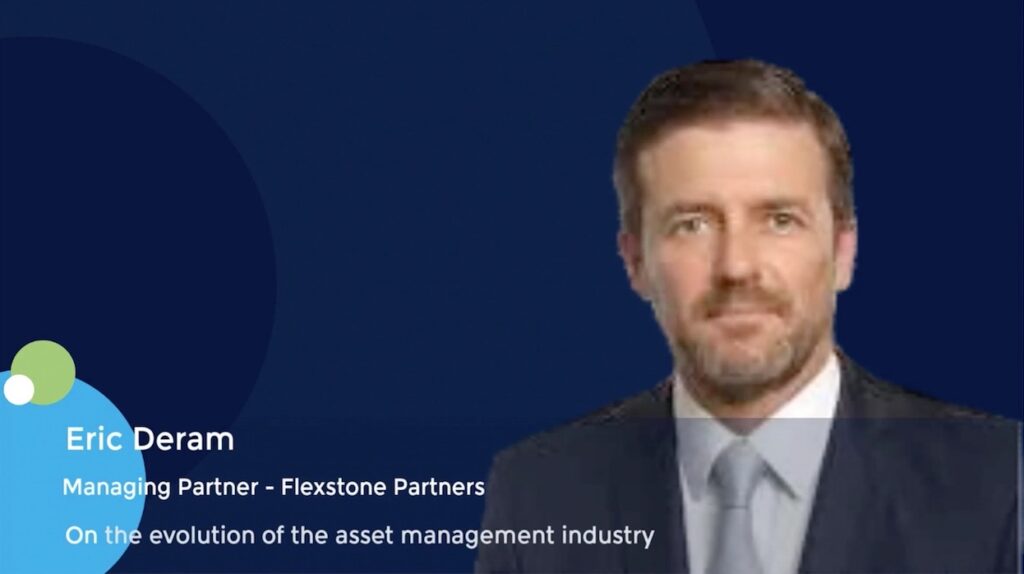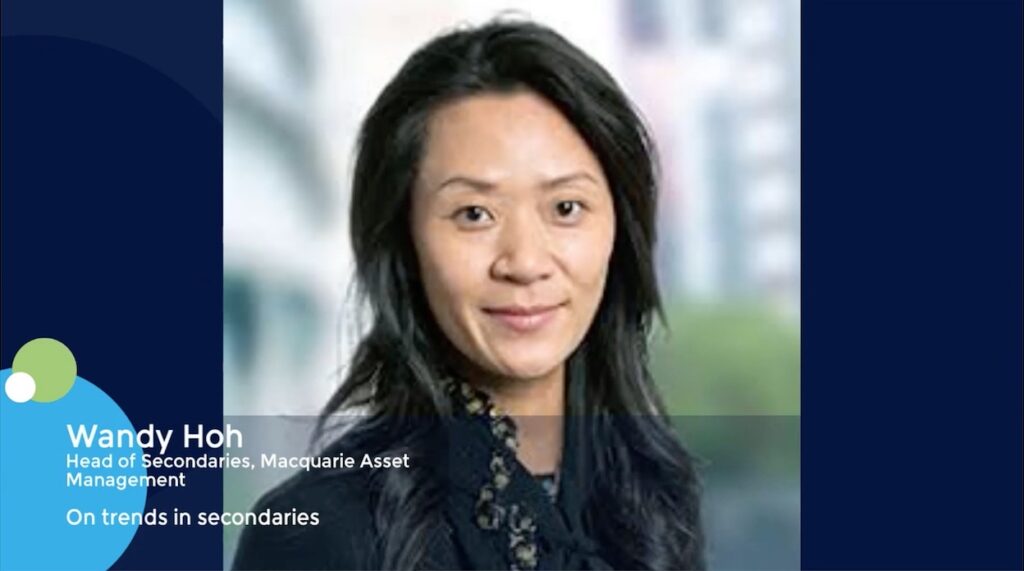GP profile: Southeast Asia’s Monk’s Hill Ventures calls for patience on exits
-
- The venture capital firm won’t be held hostage to pressures for liquidity
- Founder-centric approach is key to deal-sourcing, as shown by Ninja Van, KKday
- Fund III is 50% deployed, focusing on B2B, B2C deals with a Southeast Asia twist
Monk’s Hill Ventures will consider all exit channels, but only at the right price. The Singapore-based early-stage investor has exited 12 of its 50-plus portfolio companies, with six coming via trade sale. In the absence of IPOs – the traditional lifeblood of VC – continuation vehicles are under consideration, but fear of missing out on future upside is holding the manager back.
“Institutional LPs are not going to be happy with just one exit for one company. They want to see a consistent pattern and systematic continuous execution. They want to see not just one good company, but three to four per fund, and that these companies are reaching certain valuations,” said Kuo-Yi Lim, co-founder and a managing partner at Monk’s Hill.
Southeast Asia’s exit problem was captured in the latest e-Conomy report from Google, Temasek Holdings, and Bain & Company, which found that distributions to paid-in (DPI) from VC and growth funds for the 2013-2015 and 2016-2018 vintages trailed China and India. Last month, the Singapore Venture & Private Capital Association called on the local stock exchange to attract more start-ups.
But Lim noted that VC is a long-term endeavour and his LPs – among them sovereign wealth funds, endowments, and foundations – are willing to be patient. Southeast Asia was turbocharged, for a while, by the likes of Tiger Global Management driving up valuations and enabling early-stage investors to exit via expansion rounds. These conditions were, in his view, never sustainable.
“It’s not yet systematic and consistent. The quick pace of valuation jumps in 2020-2022 created a misinformed expectation that you can invest today and exit tomorrow. Venture isn’t like that; it shouldn’t be like that. Building new businesses is fundamentally difficult and risky,” Lim explained.
Building momentum
Monk’s Hill was founded in 2014 by Lim and Peng T. Ong (Stefan Jung, a third partner present from the outset, left within 18 months) and closed its first fund at USD 80m in 2016. Temasek served as anchor LP. Other investors included Singapore’s National Research Foundation, YJ Capital, Telstra Ventures, and Cisco Systems.
Funds II and III closed in 2020 and 2023, with the firm securing USD 100m and then doubling up to USD 200m. Temasek returned for both vintages, accompanied by an increasingly diverse set of LPs. Lim described the investor base as US-centric, with institutional investors from that market accounting for the largest portion of the fund corpus.
Monk’s Hill claims to have won support from Temasek because of the founding partners’ pedigree and the Singapore government-controlled investor’s desire to play a greater role in Southeast Asia’s start-up ecosystem. Additional momentum came as the ecosystem grew. Annual VC investment in the region seldom reached USD 1.5bn until 2017, when it hit USD 4.1bn. Since then, it has averaged USD 4.7bn.
“Timing was helpful. In 2018, big companies became more visible outside Southeast Asia,” Lim said. “We were also disciplined in our investment approach for Funds I and II, so LPs have confidence.”
Clarity of strategy and team discipline were essential to bringing in US institutional investors, he added. Ensuring these relationships persist across multiple fund vintages ultimately comes down to exits and Monk’s Hill is in the process of monetising Fund I positions. Despite challenging market conditions, the firm expects several exits over the next 12-18 months.
“The first thing to recognise is that you have to have good companies to sell. Then the exit is going to be a question of how and when,” Lim added.
Ninja Van, a Singaporean last-mile logistics provider, is regarded as one such quality asset. Lim first met Chang Wen Lai, the company’s co-founder and CEO, in 2014 through an introduction by an angel investor. Monk’s Hill wasn’t so much interested in Lai’s e-commerce business as his ideas around logistics. Following a six-month dialogue, the VC firm became one of the first investors.
Since then, Ninja Van has built a footprint that covers Singapore, Malaysia, the Philippines, Indonesia, Thailand, and Vietnam, and raised nearly USD 1bn in funding from the likes of France-based parcel delivery player Geopost, Alibaba Group, Grab Holdings, and various financial investors. Monk’s Hill remains an investor and a board member, continuing the dialogue that began a decade ago.
The company, which last raised USD 578m in equity funding in 2021, has put IPO plans on the back burner as it prioritises achieving profitability amid rising competition. Lai said in March that he hoped to reach breakeven in EBITDA terms within 12 months, adding “That in itself is not a strong IPO story,” Bloomberg reported.
KKday, an e-commerce and travel platform, is in the process of preparing for an IPO though it has yet to decide where to list, according to CEO and founder Ming Ming Chen. The company was established in Taiwan in 2015 and joined the Monk’s Hill portfolio a year later. It now claims 10m monthly active users and offers services across 500 cities in more than 80 countries.
Chen added that Monk’s Hill “speaks the same language as founders” and hasn’t pressured KKday regarding a liquidity event. The VC firm has provided guidance on recruitment, administration, and navigating regulation, he said. Other founders offered similar endorsements, including Cha-Ly Koh of property data player Urbanmetry and Oswald Yeo of recruitment platform Glints.
“A lot of VCs in this region are very focused on B2C products, and it’s hard to find investors that are more in tune with deep-tech products,” said Koh. “We have similar backgrounds. They are very technical and understand the technology that we’re building very quickly.”
Credible counterparty
Asked about establishing credibility among founders, Lim and Suslie Lie, a partner at Monk’s Hill, said that providing capital, networks, and expertise is the key – and doing so consistently. This is especially important given Southeast Asia remains a relatively immature start-up ecosystem.
“If you are a founder, it’s actually very difficult to access knowledge and experience from other founders,” Lie said. “I felt there may be value in coming back as an investor.”
She followed this path. A first career working for the likes of the World Bank and Asian Development Bank turned into a second as co-founder of ErudiFi, a technology-enabled education finance start-up. This came with recognition as the first female founder from Indonesia to enter the Y Combinator programme. Lie joined Monk’s Hill in 2021 as a venture partner and became a full partner the following year.
Justin Nguyen, another founder-turned-investor, completes the firm’s partner lineup. There are now more than 35 staff, including 12 investment professionals, on the ground in Singapore, Indonesia, Vietnam, Thailand, and Malaysia. The firm has offices in Singapore, Jakarta, and Ho Chi Minh City.
Lim and Ong’s insistence that all investment professionals have direct start-up experience is influenced by their personal histories of establishing companies in the US and Singapore. They worked together at Encentuate, an access management software developer eventually acquired by IBM.
This founder DNA appears to resonate with start-ups. KKday chose Monk’s Hill over several investors in Taiwan because of the team’s strong industrial background. Subsequent investors in the company are also largely strategic, including Alibaba via the Alibaba Entrepreneurs Taiwan Fund, Line Corporation through Line Ventures, and Japanese travel company HIS.
“We didn’t see Monk’s Hill as a pure financial investor. It has been strategically helpful in our expansion in Southeast Asia,” said Chen, flagging assistance on issues as fundamental as Singapore company registration. “Besides, Peng himself invested in Qunar [a Chinese online travel agency], so Monk’s Hill understood travel and tourism.”
Ong’s exposure to Qunar – which listed in the US in 2013 and is now part of the larger platform Trip.com – came when working as a venture partner at China-based GSR Ventures. In recent years, Chinese investors have flocked to Southeast Asia, looking to replicate success stories from their home market, even pushing the same business models and working with the same founders.
Monk’s Hill recognises the advances China has made in areas like e-commerce, social commerce, and financial technology. Lim also highlights some commonality in consumption patterns – an increasing appetite for quality that comes with rising prosperity – and lower levels of competition among start-ups. That said, transplantation only works with some local adaptation.
“There was some expectation that China and Southeast Asia are the same movie, but with China being episode six and Southeast Asia being episode one,” Lim said. “Over the years, we realised certain business models did transfer to Southeast Asia and work well in the region. But we also realised there were a lot of things that are very different.”
At the operational level, Southeast Asia is distinct as a mishmash of different regulations and structures. KKday, for example, wants to provide a uniform payment experience. In Indonesia, however, before the rise of credit cards and digital wallets, it could only rely on bank transfers and purchaser verification was difficult without names and transaction numbers.
Southeast Asia’s varied languages and cultures present another challenge. Chinese languages are considered dense enough to convey comprehensive meanings in just two or four characters. Southeast Asian languages are lengthier, which has implications for visual production development and user interface (UI) design.
“You don’t have the luxury in Bahasa, Vietnamese, or Thai. So the product adaptation is not just the language. it’s also the visual,” Lim said.
Local nuance
The learning process is not only relevant to the localisation of alien business models, but also to the business itself. This is apparent in Monk’s Hill’s approach to revenue alignment in B2B segments where subscription-based software-as-a-service (SaaS) is on the rise in Southeast Asia.
From cybersecurity specialists like Acronis to retail software providers such as Trax to school management software players like Cialfo, the value proposition is largely based on enhancing operational efficiencies. However, Lie contends that the priority for most customers in Southeast Asia is growth, not cost reduction.
“It’s ‘How do I expand into new channels or gain new users?’” she explained. “What resonates and what we will be willing to pay for are fundamentally different. Even though you are fundamentally helping efficiency improvement, what you’re selling, and what you are paid for, is the ability to increase revenue.”
This thinking has influenced business model development at Radiant 1, a Monk’s Hill portfolio company that provides software for hotel room inventory and revenue management. Instead of a straight subscription payment, it receives commissions based on a customer’s revenue growth.
The VC firm has also backed an agricultural technology company that takes a cut of incremental revenues generated by shrimp farmers who deploy its data analytics platform. The beauty of the model, Lie added, is that returns can come quickly once the flywheel starts turning.
As for the B2C space, Monks’ Hill is seeing an evolution from focusing on the lowest-cost item to placing a premium on brands and lifestyle options. Lim connects it to broader consumer upgrades whereby, for example, people are more willing to spend on dining and entertainment outside the home and want to be guided by friends and influencers with whom they have an affinity.
For the most part, Monk’s Hill accesses these opportunities through pre-Series A and Series A rounds. Each fund makes 15-20 core investments, writing cheques of USD 2m to USD 8m. There is also a seed strategy that supports founders in the VC firm’s ecosystem and share investment opportunities with them. Commitments are in the USD 500,000 to several million dollar range.
Fund III is now 50% deployed and Monk’s Hill claims to maintain a steady investment pace, typically backing about four companies every year. The exception was in 2021 when eight deals were closed. According to AVCJ Research, the firm made 15 and nine investments in 2021 and 2022, respectively, although these totals include re-ups in existing portfolio companies.
Outperformers will be relatively few in number – as with most venture capital funds – but Lim classifies success as a 10x-20x return. Such companies typically undergo rapid growth over a 5-7-year period, achieving tens or hundreds of millions of dollars in revenue. Success, therefore, rests on the alignment of talent, market opportunity, and timing.
“The founder needs to be good, ready, and capable; the market needs to be there; and the competition needs to allow you to do that,” said Lim. “All those conditions are very difficult to find at the same time.”














